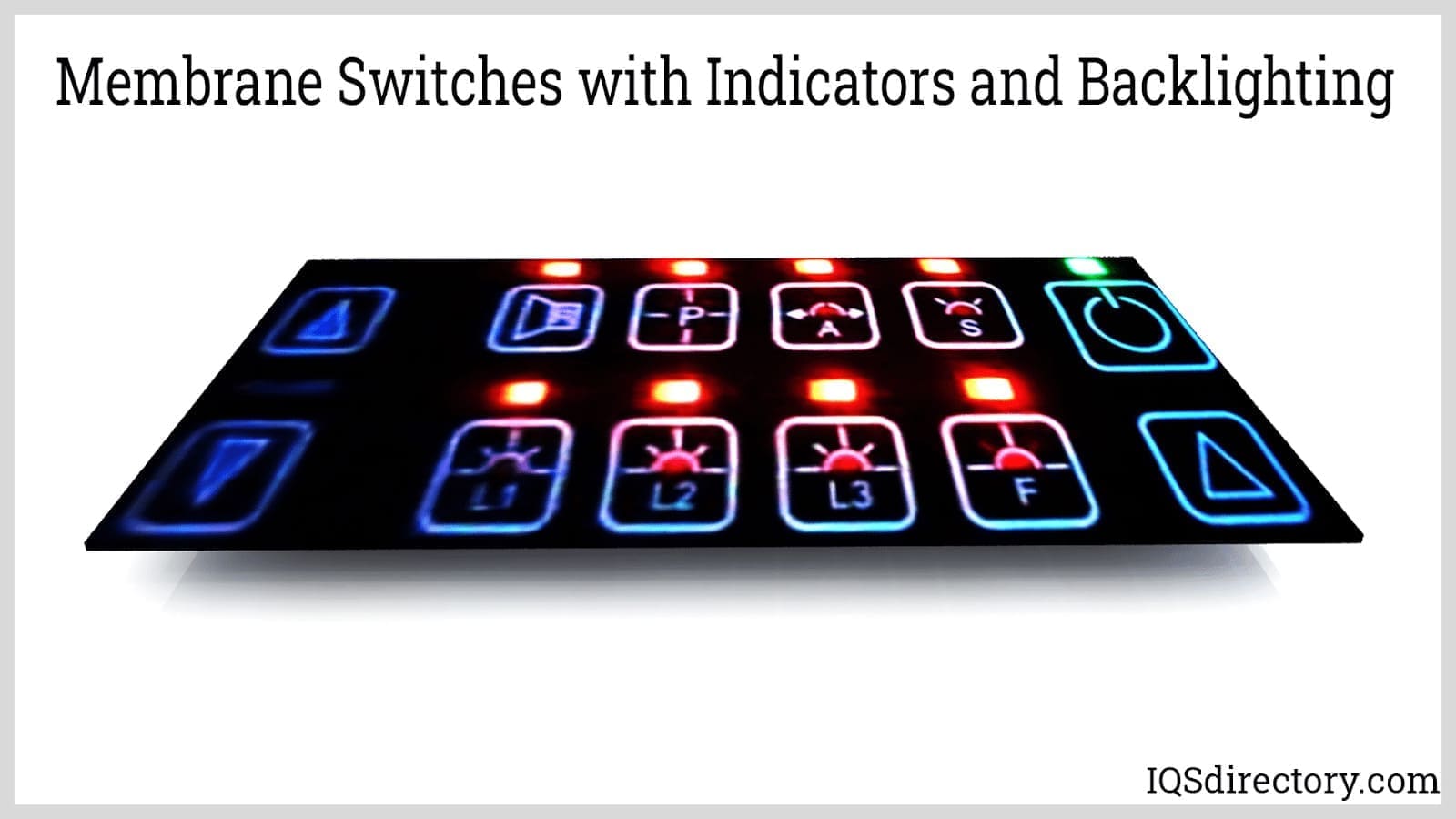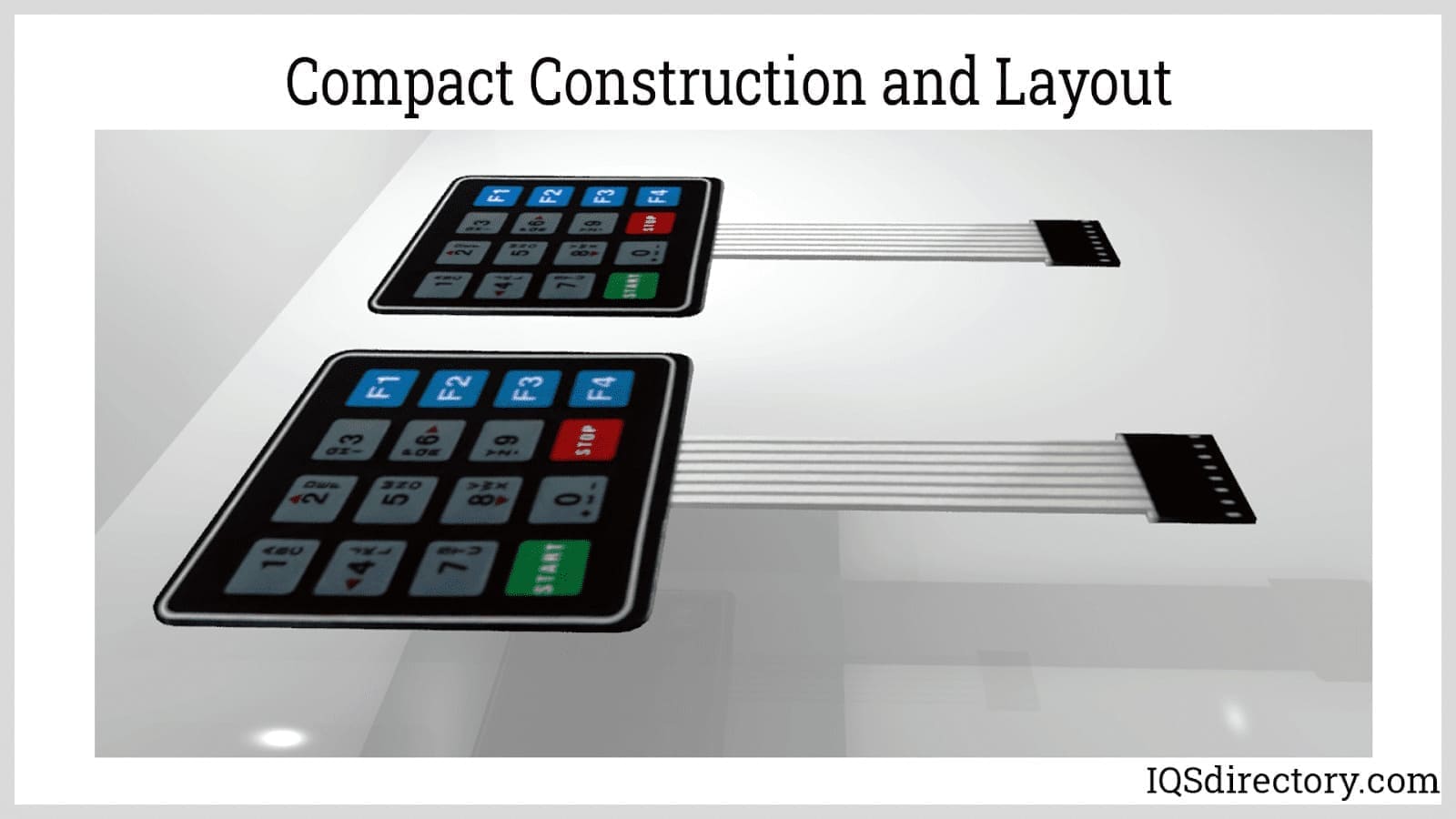All Regarding Membrane layer Change: A Comprehensive Overview for Beginners
Membrane switches are vital elements in modern electronic devices, offering an one-of-a-kind interface for user communication - membrane switch. Their split building, including overlays and conductive traces, gives performance and sturdiness. Unlike conventional mechanical buttons, membrane buttons present a streamlined style and customizable choices. Understanding their essential functions and advantages can transform item design. The details of their application and design considerations necessitate further exploration.
What Is a Membrane Change?
A membrane layer button is a kind of electric switch that contains a versatile membrane layer layered over a printed circuit board. This design enables a streamlined and small user interface, often made use of in various electronic gadgets. Membrane layer buttons are frequently located in consumer appliances, medical tools, and industrial machinery as a result of their durability and resistance to environmental factors.The construction usually consists of several layers, such as visuals overlays and glue support, which provide tactile comments and safeguard the circuitry beneath. The procedure of a membrane layer button is initiated when pressure is put on the surface, completing an electric circuit.These switches are valued for their flexibility, allowing custom-made designs and printed graphics that cater to particular interface. Their low-profile nature minimizes room needs, making them ideal for applications where conventional switches might not fit. Generally, membrane switches offer a visual and useful option for contemporary electronic devices.
Key Elements of Membrane Layer Switches Over
Membrane layer switches over make up several key elements that contribute to their capability and efficiency. The top layer, understood as the overlay, offers the user interface and is often published with graphics or icons. Under the overlay lies a spacer layer, which separates the conductive components and protects against unintentional activation. The next vital part is the visuals layer, which enhances aesthetics and guarantees the durability of the design.Conductive traces, commonly made from products like silver or carbon, are printed on the circuit layer. When stress is put on the overlay, these traces enter into contact, finishing the circuit. Furthermore, a support layer uses structural support and can be made from products such as polyester or polycarbonate. Together, these elements create a dependable, user-friendly user interface suitable for different applications, from household appliances to commercial tools. Comprehending these components is essential for any person interested in membrane layer switch technology.
Exactly How Membrane Layer Changes Job
Understanding just how membrane switches over feature is vital for valuing their widespread usage in various gadgets. A membrane layer button operates via a series of layers, including a graphic overlay, spacer, and a circuit layer. When stress is put on the overlay, it compresses the spacer layer, enabling the circuit layer to make call and complete an electric circuit. This action sends a signal to the device, triggering a reaction, such as activating a light or turning on a function.Membrane switches over can be created with numerous functions, including responsive comments, backlighting, and custom graphics, boosting customer interaction. Their building and construction permits a closed layout, protecting the interior components from dust, wetness, and impurities. This resilience makes them appropriate for diverse applications, from customer electronic devices to commercial devices. In general, the simpleness and effectiveness of membrane changes add to their popularity in contemporary technology.
Advantages of Membrane Switches Mechanical Switches
While mechanical switches have long been a staple in many gadgets, membrane layer switches deal distinctive advantages that make them significantly appealing. One substantial advantage is their slim profile, enabling even more compact layouts and better versatility in product growth. In addition, membrane layer changes feature a consistent surface, which improves aesthetic allure and streamlines cleaning, making them suitable for environments where hygiene is critical.Another advantage is their resistance to dust and wetness. Unlike mechanical switches, which can be compromised by ecological aspects, membrane layer switches supply a closed interface that shields versus contaminants - membrane switch. Membrane buttons generally have a longer lifespan due to less moving parts, resulting in enhanced sturdiness and reliability.Cost-effectiveness is also a significant benefit, as membrane layer buttons can be produced in mass with lower manufacturing prices. These factors incorporate to position membrane layer buttons as a useful option to traditional mechanical choices in various applications
Typical Applications of Membrane Switches Over
Membrane switches are extensively used in numerous markets, particularly in consumer electronics and commercial control panels. In customer devices, they supply a streamlined, easy to use user interface, while in industrial setups, they enhance sturdiness and functionality. Understanding these applications highlights the adaptability and functionality of membrane switches in contemporary technology.
Consumer Electronic Devices Devices
As consumer electronics remain to advance, membrane buttons have actually come to be a preferred choice for a selection of tools as a result of their versatility and sleek style. These buttons are commonly found in smartphones, tablets, and remotes, where space is limited and appearances issue. Their reduced navigate to this website account and customizable designs allow manufacturers to develop user-friendly interfaces that enhance the overall user experience. Additionally, membrane layer switches are typically utilized in home appliances such as microwaves and coffee makers, giving instinctive control choices while withstanding moisture and dust. The toughness and dependability of membrane switches make them ideal for day-to-day customer items, guaranteeing durability and consistent efficiency. Generally, their integration in consumer electronics mirrors a mix of functionality and modern-day layout.
Industrial Control Panels
The applications of membrane layer changes extend past consumer electronics, finding significant usage in industrial control board. These buttons are preferred for their toughness and resistance to severe environments, making them excellent for producing and process control setups. They supply a reputable interface for drivers to manage machinery, display processes, and change setups. Membrane buttons can be customized to match certain operational requirements, incorporating functions like backlighting and tactile feedback, improving user experience. Their inconspicuous design permits integration right into various devices, while their capacity to stand up to spills, dust, and extreme temperature levels guarantees long life. Generally, membrane switches add to reliable and risk-free operation in industrial applications, showing their flexibility and efficiency sought after environments.
Considerations for Creating Membrane Layer Switches
When creating membrane buttons, selecting the best products is important to assure longevity and capability. Additionally, understanding layer configuration techniques can substantially affect the switch's performance and individual experience. These factors to consider play an essential function in producing reliable and reputable membrane layer switch layouts.
Product Option Relevance
Product selection plays an essential role in the design and functionality of membrane layer switches. The picked products straight impact the switch's durability, tactile action, and general aesthetic. Key factors to consider consist of the substratum, which need to supply structural honesty while permitting flexibility, and the visuals overlay, which requires to be resistant to use and ecological aspects. Conductive materials ought to assure reputable electric performance, while adhesives need to use solid bonding without endangering the button's operation. In addition, compatibility with making processes and end-user environments is crucial; materials must withstand varying temperatures, moisture levels, and chemical direct exposure. Inevitably, appropriate product choice not only improves the membrane button's performance but likewise adds to its longevity and customer satisfaction, making it a critical element of the design process.

Layer Configuration Strategies

Frequently Asked Questions
Exactly How Long Do Membrane Layer Changes Normally Last?
Membrane buttons usually have a life expectancy of 1 to 5 million cycles, depending on use and environmental conditions. Elements such as design quality and operating regularity significantly affect their sturdiness and total efficiency long life.

Can Membrane Switches Be Custom-made for Specific Layouts?
Membrane layer switches can certainly be customized to accommodate particular styles, allowing for diverse forms, shades, and performances. This flexibility enables suppliers to customize these buttons to fulfill special visual and operational requirements successfully.
What Products Are Made Use Of in Membrane Layer Change Building And Construction?
Membrane buttons are generally constructed using materials such as polyester, polycarbonate, and glue layers. These products offer versatility, resistance, and resilience to ecological elements, making sure the buttons work properly in various applications and conditions.
Are Membrane Changes Immune or water-proof to Moisture?
Membrane switches can be created to be moisture-resistant, using specialized materials and coatings. Their water-proof capabilities depend on building high quality and certain applications, making it essential to assess requirements for optimal efficiency in different atmospheres.
Exactly How Are Membrane Switches Fixed if Harmed?
Fixing broken membrane switches generally involves replacing the influenced layer or circuit. Technicians might additionally use conductive sticky or utilize specialized repair work kits, ensuring capability is recovered without total replacement of the whole button assembly. Unlike conventional mechanical switches, membrane switches offer a smooth design and customizable options. A membrane layer switch is a kind of electric switch that is composed of an adaptable membrane layer layered over a printed circuit board. The operation of a membrane layer switch is launched when stress is used to the surface, finishing an electrical circuit.These switches are valued for their convenience, allowing customized designs and published graphics that cater to specific individual interfaces. While mechanical buttons have actually long been a staple in lots of tools, membrane changes offer unique advantages that make them significantly appealing. Membrane switches usually have a longer lifespan due to less moving parts, resulting in enhanced durability and reliability.Cost-effectiveness is additionally a significant benefit, as membrane layer buttons can be created in mass with lower production costs.